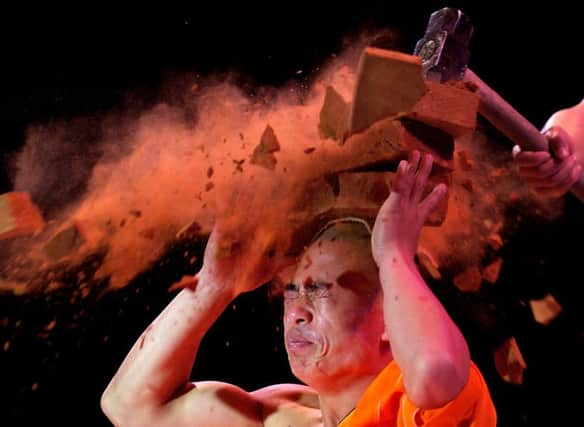Chinese shaolin warrior temple to promote brand


That online ad placed by China’s 1,500-year-old Shaolin temple has drawn a brisk response, reflecting the institution’s exalted place in Chinese history and popular culture.
Chinese state media reported yesterday that 300 people have applied for the two positions, including business executives, media professionals and recent graduates from overseas universities. Although the temple’s monks are all male, men and women are invited to send in their resumes, reports said.
Advertisement
Hide AdAdvertisement
Hide AdCalls to the temple’s publicity office were unanswered yesterday.
The move is the latest attempt by the abbot Shi Yongxin to exploit the temple’s fame in the name of propagating Buddhist thinking and culture.
The Shaolin temple, its monks and their form of kung fu have developed into a lucrative business enterprise, raising controversy among some who accuse Mr Shi of over- commercialisation.
The abbot has answered his critics by saying he was just defending the temple’s reputation and promoting its values.
Located in the mountains of Henan province south of Beijing, Shaolin won fame for its monks’ martial arts exploits, including the rescue of an emperor centuries ago. It has since been the subject of countless books and films, such as Steven Chow’s 2001 comedy Shaolin Soccer.
Since taking over as abbot in the 1990s, Mr Shi has threatened to sue companies that use the temple’s name or image without permission, and served as executive producer for martial arts films based on the temple.
The temple takes in foreign students, runs month-long executive martial arts retreats, and maintains a website in Chinese and English.
Mr Shi has used the income to upgrade temple facilities – installing lavish rooms for visitors, which are equipped with uniformed cleaners and TVs.
Advertisement
Hide AdAdvertisement
Hide AdThe revamp has prompted more outrage from Chinese traditionalists, and reports said deflecting media criticism and accusations of over exploitation will be a major part of the job for any media director.
The flexibility over candidates’ requirements shows the temple’s desire to attract a high standard of applicant, although a knowledge of and appreciation for Zen Buddhist thought and culture is desired.
Reports warned, however, that the position is not all glamour and glitz.
While Shaolin is a high-profile name, it is also an ancient temple where asceticism and removal from China’s fast-paced urban lifestyles underpin daily activities, the South Metropolitan newspaper pointed out.
“If you work for Shaolin Temple, you need to be able to handle loneliness,” the paper said, quoting an unidentified person who it said worked at the temple for many years.
“Most young people will find this pretty dull.”